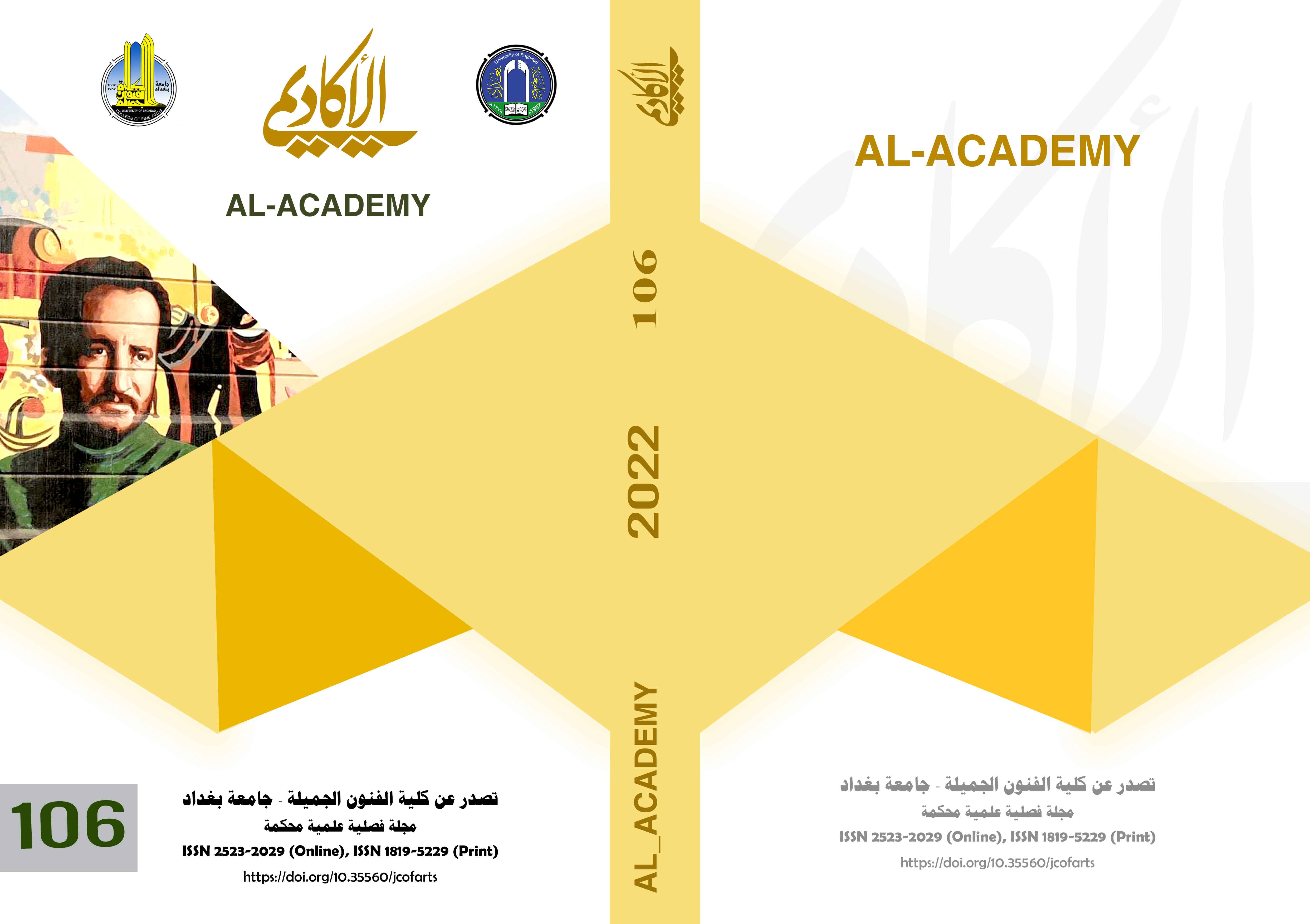Decorative supplements and their role in fabric designs and women's fashion
DOI:
https://doi.org/10.35560/jcofarts106/5-22Keywords:
decorative accessories, fabric designs, women's fashionAbstract
The decorative supplements added are important factors in determining many decorative effects and how to implement them, whether in fabrics or fashion, and also work to determine the nature of perception for both the designer and the recipient and have a key role in shaping the human personality and determining his motives and emotional tendencies in the acquisition of fabrics and fashion and the vocabulary they carry A design that has certain connotations and symbols that gain its value from the effects it leaves on the physical formations of women. The problem of the research came with the following question (What are the decorative supplements and their role in the designs of fabrics and women’s fashion?) The research also dealt with three sections, the first topic included the methodological framework in posing the problem and its importance and objectives as well as On the definition of the most important terms, and the second topic included the theoretical framework, which included the following topics: First: The concept of decorative complements in design, Second: Decorative designs in fabrics and fashion. As for the third topic, it included the research procedures to reach the objectives of the research, and it relied on the analytical description method, and then the most important results and recommendations were included, and finally the most important sources and references.
1. The design models relied on industrial raw materials in the first place because of their good appearance, high ironing ability, flexibility, softness, and high ability to accept dyeing and printing techniques, which helped in showing the aesthetic aspects that are consistent with the design goal and the age stage.
2. The printing technology has played a clear role in highlighting the aesthetic qualities of the decorative designs through the optical values. These values have achieved the variation in the percentage of appearance and how to influence the nature of the recipient's perception of it, which made the technology an active role in determining the nature of the decorative supplements added and the method of influencing the recipient.
References
Adel Jawad, M. (2012). Costume Design in the Iraqi Theater (Etithal Al-Tai, as an example). Baghdad: University of Baghdad, College of Fine Arts, Master's Thesis.
Al-Amiri, F. (2005). Integration between fabric and fashion designs and the resulting relationship in the overall achievement. Baghdad: University of Baghdad, College of Fine Arts, PhD thesis.
Al-Bazzaz, A. (2001). design facts and assumptions. Amman: Dar Al-Faris for Publishing and Distribution.
al-Hiti, H. (1978). Mass Communication and Social Change. Baghdad: Ministry of Culture and Arts.
Al-Husseini, H. (2009). Setting design foundations to enrich artistic taste in modern fabric designs. Baghdad: University of Baghdad, College of Fine Arts, Master's thesis.
Al-Nadi, N. (2006). Color Printing. Jordan: Arab Society Library.
Al-Rubaie, , K.-H. (2007). An educational program for fashion design skills and their complements for students of the Institute of Applied Arts. Baghdad: University of Baghdad, College of Fine Arts, PhD thesis.
Al-Rubaie, A. (1999). Shape, Movement, and Resulting Relationships in Two-Dimensional Design Processes (An Analytical Study). University of Baghdad, College of Fine Arts, PhD thesis.
Al-Safadi, J. (2007). Foundations of Design and Artistic Formation. Syria: Damascus University, College of Fine Arts.
al-Samurai, H. (1988). Introduction to Psychology. Baghdad: Al-Mustansiriya University, College of Education.
Al-Saqi, H. (1998). Decorative units in the mosques of the city of Baghdad and the possibility of using them in the curriculum of handicrafts. Baghdad: University of Baghdad, College of Fine Arts, unpublished master's thesis.
Al-Zubaidi, Z. (2003). Design Relationships in Iraqi Women's Fabrics. University of Baghdad, College of Fine Arts, Master's Thesis.
Fakhri, K. (1994). Why do we not understand modern art. Baghdad: Arab Horizons, House of General Cultural Affairs, 19th year.
Haqiq, A. (1994). Public Opinion between Propaganda and Media. Tripoli: Al-Fateh University.
Jarjis, S. (1988). Technical Elements of Fashion Design for Vocational Education Schools. Iraq: Ministry of Education.
mayama, Y. (1973). rademarKandSymbols . vannostr and reinhold company: New york.
Muhammad, Q. (2011). Physics. Baghdad: Ministry of Education, General Directorate of Curricula.
Mustafa, B. (1985). Coordination and Beautification of Cities and Villages. Egypt: Distribution of the Knowledge Foundation in Alexandria.
Nicholas, W. (1990). Optical illusions, their art and science. (M. Muzaffar, Trans.) Baghdad: Ministry of Culture and Information.
Nobler, N. (1992). Vision Dialogue: An Introduction to Art Tasting and Aesthetic Experience. (F. Khalil, Trans.) Beirut: Dar Al-Mamoun for translation and publishing.
Yassin, R. (2011). The Aesthetics of Reception in Opera-Designed Fabrics. Baghdad: al-Academic Journall, College of Fine Arts, Issue 65.
Zaki, I. (1995). Fashion Design. Amman: Future House for Publishing and Distribution.
Downloads
Published
Issue
Section
License
Copyright (c) 2022 Ilham Taher Hussein

This work is licensed under a Creative Commons Attribution 4.0 International License.













